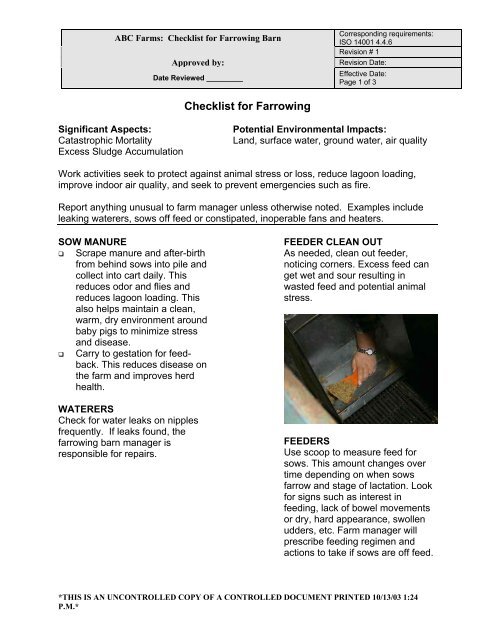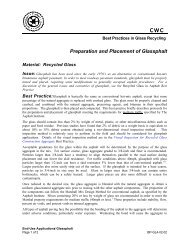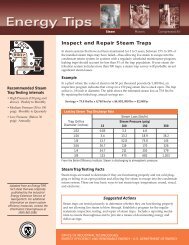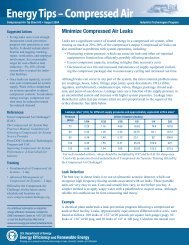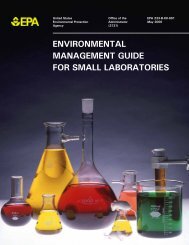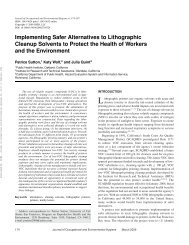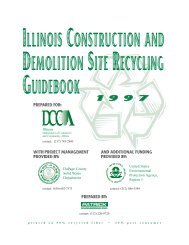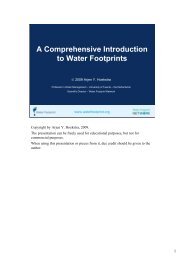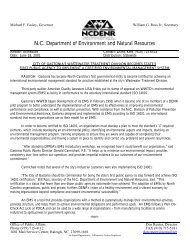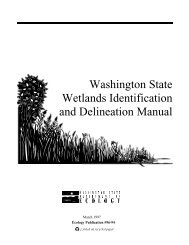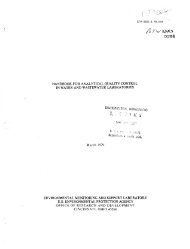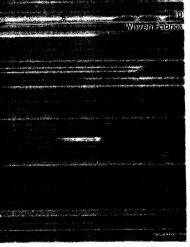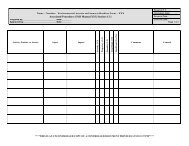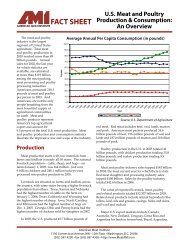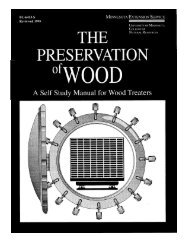Farrowing Checklist & Photos
Farrowing Checklist & Photos
Farrowing Checklist & Photos
You also want an ePaper? Increase the reach of your titles
YUMPU automatically turns print PDFs into web optimized ePapers that Google loves.
ABC Farms: <strong>Checklist</strong> for <strong>Farrowing</strong> Barn<br />
Approved by:<br />
Date Reviewed _________<br />
Corresponding requirements:<br />
ISO 14001 4.4.6<br />
Revision # 1<br />
Revision Date:<br />
Effective Date:<br />
Page 1 of 3<br />
<strong>Checklist</strong> for <strong>Farrowing</strong><br />
Significant Aspects:<br />
Catastrophic Mortality<br />
Excess Sludge Accumulation<br />
Potential Environmental Impacts:<br />
Land, surface water, ground water, air quality<br />
Work activities seek to protect against animal stress or loss, reduce lagoon loading,<br />
improve indoor air quality, and seek to prevent emergencies such as fire.<br />
Report anything unusual to farm manager unless otherwise noted. Examples include<br />
leaking waterers, sows off feed or constipated, inoperable fans and heaters.<br />
SOW MANURE<br />
Scrape manure and after-birth<br />
from behind sows into pile and<br />
collect into cart daily. This<br />
reduces odor and flies and<br />
reduces lagoon loading. This<br />
also helps maintain a clean,<br />
warm, dry environment around<br />
baby pigs to minimize stress<br />
and disease.<br />
Carry to gestation for feedback.<br />
This reduces disease on<br />
the farm and improves herd<br />
health.<br />
WATERERS<br />
Check for water leaks on nipples<br />
frequently. If leaks found, the<br />
farrowing barn manager is<br />
responsible for repairs.<br />
FEEDER CLEAN OUT<br />
As needed, clean out feeder,<br />
noticing corners. Excess feed can<br />
get wet and sour resulting in<br />
wasted feed and potential animal<br />
stress.<br />
FEEDERS<br />
Use scoop to measure feed for<br />
sows. This amount changes over<br />
time depending on when sows<br />
farrow and stage of lactation. Look<br />
for signs such as interest in<br />
feeding, lack of bowel movements<br />
or dry, hard appearance, swollen<br />
udders, etc. Farm manager will<br />
prescribe feeding regimen and<br />
actions to take if sows are off feed.<br />
*THIS IS AN UNCONTROLLED COPY OF A CONTROLLED DOCUMENT PRINTED 10/13/03 1:24<br />
P.M.*
ABC Farms: <strong>Checklist</strong> for <strong>Farrowing</strong> Barn<br />
Approved by:<br />
Date Reviewed _________<br />
Corresponding requirements:<br />
ISO 14001 4.4.6<br />
Revision # 1<br />
Revision Date:<br />
Effective Date:<br />
Page 2 of 3<br />
SYRINGES<br />
Wash and sterilize syringes in hot<br />
water bath after each use. This<br />
allows them to be reused.<br />
NEEDLES<br />
Collect sharps (needles) and<br />
dispose in a puncture-proof<br />
container (legal requirement).<br />
When container full of needles,<br />
seal container and put into<br />
dumpster.<br />
HEAT MATS<br />
Check mats often by placing hand<br />
on mat to make sure operating and<br />
not burned out.<br />
Farm manager sets controls on<br />
mats. If pigs seem uncomfortable,<br />
see farm manager. Photo shows<br />
pigs well spread-out and<br />
comfortable.<br />
HEAT LAMPS<br />
After sows are brought in, hang<br />
heat lamps but don’t plug in.<br />
To protect baby pigs, hang<br />
light to the rear and to the side<br />
away from sow to protect baby<br />
pigs from being crushed.<br />
When sow begins farrowing,<br />
plug in heat lamp. This keeps<br />
pigs comfortable and<br />
minimizes energy use. Run<br />
lamp first day only unless<br />
needed longer based on<br />
employee training.<br />
HEATERS<br />
Inspect heaters in winter to see if<br />
working properly – running and<br />
pilot light on.<br />
DEAD<br />
Collect dead and dispose in dead<br />
box within 24 hours. This is a legal<br />
requirement and reduces potential<br />
odor. Carcasses go to rendering<br />
and are made into feed protein and<br />
other products.<br />
*THIS IS AN UNCONTROLLED COPY OF A CONTROLLED DOCUMENT PRINTED 10/13/03 1:24<br />
P.M.*
ABC Farms: <strong>Checklist</strong> for <strong>Farrowing</strong> Barn<br />
Approved by:<br />
Date Reviewed _________<br />
Corresponding requirements:<br />
ISO 14001 4.4.6<br />
Revision # 1<br />
Revision Date:<br />
Effective Date:<br />
Page 3 of 3<br />
RODENTS<br />
As needed, put out bait blocks to<br />
reduce rodents, control disease<br />
and reduce feed waste.<br />
FANS<br />
At least monthly, clean fans,<br />
shutters and inlets inside and<br />
outside of the building to maintain a<br />
comfortable environment for the<br />
animals, maintain fan efficiency,<br />
and prevent dust fires.<br />
COOL CELLS<br />
Once during the year or as needed,<br />
cool cell pads should be cleaned<br />
using bleach and hosed down with<br />
fresh water. This reduces dust and<br />
mildew and improves cool cell<br />
efficiency.<br />
When finished cleaning, dump<br />
recycle reservoir and put in fresh<br />
new water. Put piece of copper<br />
tubing in reservoir to prevent algae<br />
growth.<br />
Farm manager set cool cell timers<br />
to allow for cool cells to dry out<br />
daily to prolong cell life.<br />
LIGHT BULBS<br />
Replace any nonworking light bulbs<br />
and dispose in trash can.<br />
*THIS IS AN UNCONTROLLED COPY OF A CONTROLLED DOCUMENT PRINTED 10/13/03 1:24<br />
P.M.*


